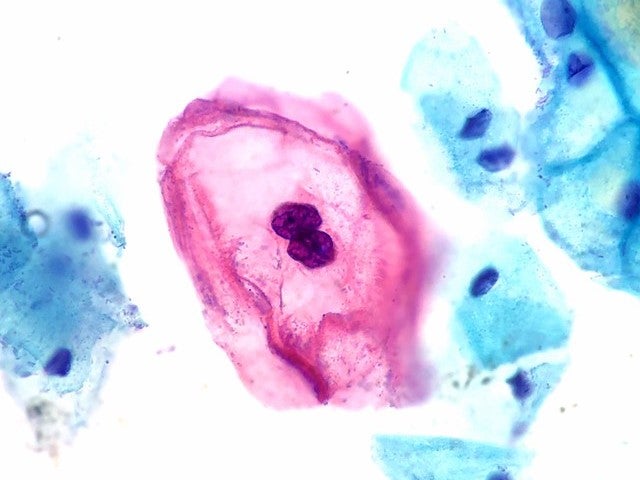
Researchers from Laval University, Canada, have found that five to eight years after vaccination there was a significant reduction in the prevalence of multiple types of human papillomavirus (HPV) and related conditions across the developed world.
HPV vaccines have been licensed since 2006 and since then vaccination programmes have been rolled out in many developed countries globally. It has been available in the UK since 2008 and provided to girls aged 12 to 13 at school.
The researchers found that prevalence of HPV 16 and 18 reduced by 83% over the period among 13 to 19 year olds and declined 66% in 20 to 24 year olds. HPV 16 and 18 are two of the most common strains causing genital cancer.
Prevalence of HPV 31, 33 and 45 fell 54% in 13 to 19 year olds; these stains of HPV are less common but in a list of 13 that of concern in causing cervical cancer.
Although it is too early to definitively conclude the impact of widespread vaccination has had on prevalence of cervical cancer, the most common consequence of contracting HPV, the Canadian researchers did record significant reductions in cases of anogenital warts and cervical intraepithelial neoplasia grade 2+ (CIN2+).
Diagnosis of anogenital warts reduced 67% in girls aged 15 to 19, 54% in the 20 to 24 age group and 31% in women aged 25 to 29. There was a related 48% reduction in anogenital warts cases in boys aged 15 to 19 and a 32% decline in men aged 20 to 24.

US Tariffs are shifting - will you react or anticipate?
Don’t let policy changes catch you off guard. Stay proactive with real-time data and expert analysis.
By GlobalDataCIN2+ cases declined 51% in 15 to 19 year old girls and 31% in 20 to 24 year old girls.
The study concluded: “Our results show compelling evidence of the substantial impact of HPV vaccination programmes on HPV infections and CIN2+ among girls and women, and on anogenital warts diagnoses among girls, women, boys, and men.
“Additionally, programmes with multi-cohort vaccination and high vaccination coverage had a greater direct impact and herd effects.”
Their conclusions were based on a review and meta-analysis of studies conducted between 2014 and 2018 with HPV-related endpoints focused on the period between pre and post-vaccination. They claim their analysis based on 65 articles in 14 countries, which represents 60 million individuals.
Based on these findings and the success of HPV vaccination programmes, the researchers predict it may be possible to eradicate this virus in the coming decades in developed countries if widespread vaccination continues.
Professor Marc Brisson one of the authors told the Guardian: “We’re working with the WHO, using mathematical modelling to determine when elimination would occur.
“We don’t have a precise date. High vaccine coverage has to be maintained. It depends on the country and how much coverage and screening there is, and how many cohorts have been vaccinated.”



